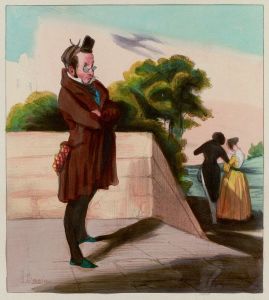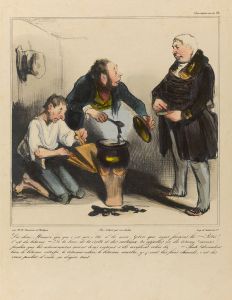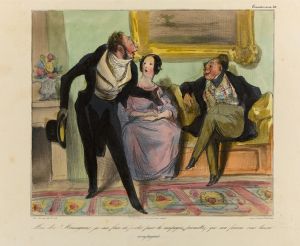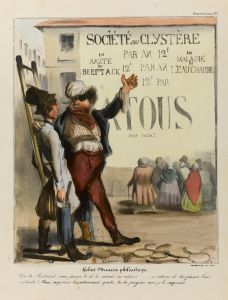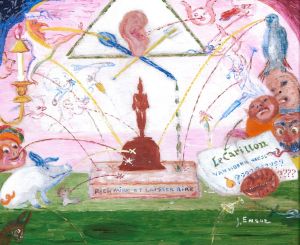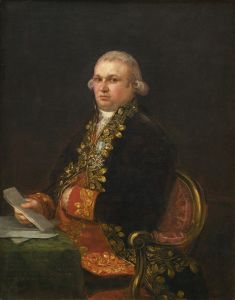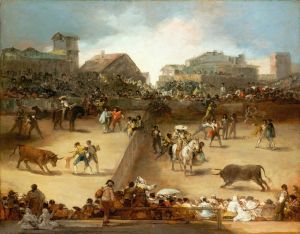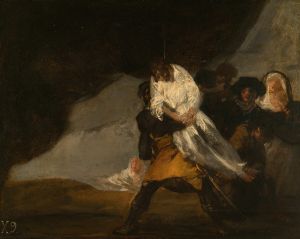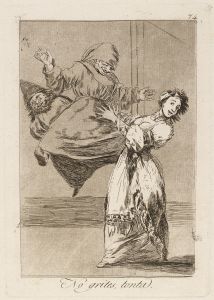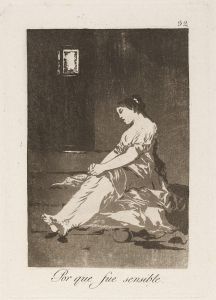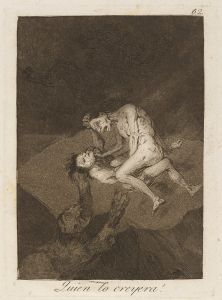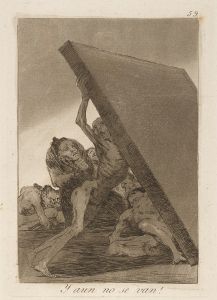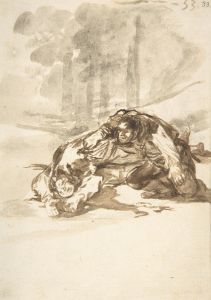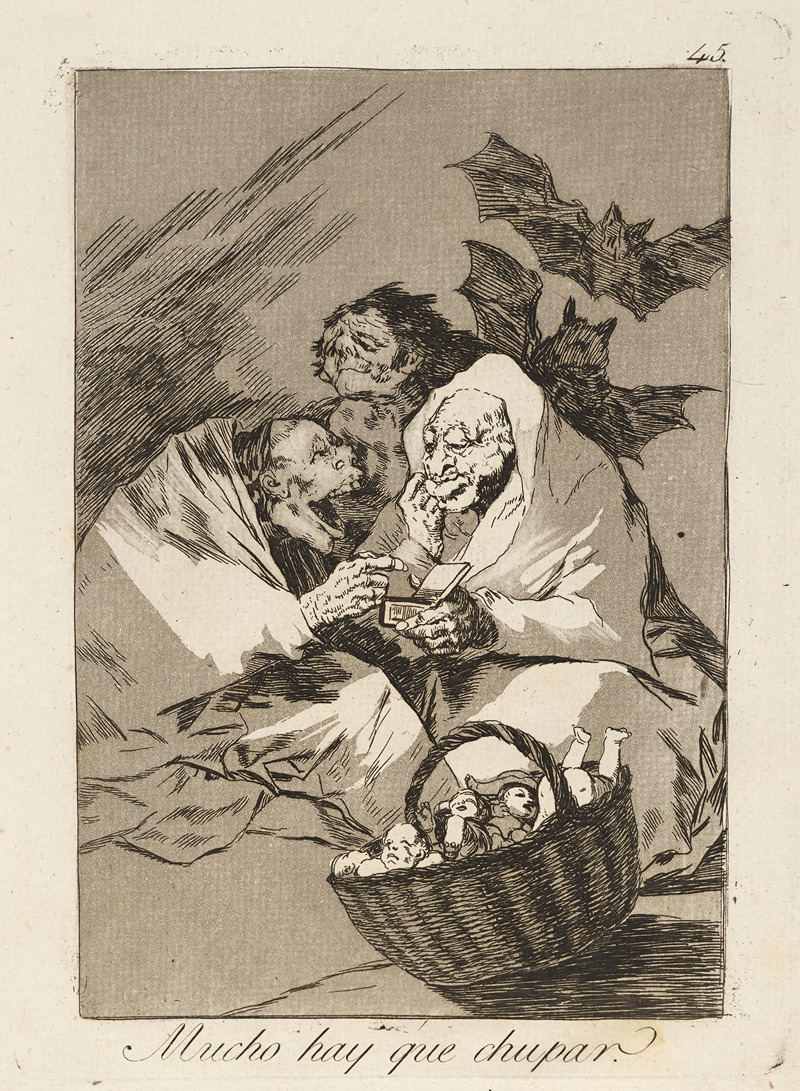
Mucho hay que chupar.
A hand-painted replica of Francisco de Goya’s masterpiece Mucho hay que chupar., meticulously crafted by professional artists to capture the true essence of the original. Each piece is created with museum-quality canvas and rare mineral pigments, carefully painted by experienced artists with delicate brushstrokes and rich, layered colors to perfectly recreate the texture of the original artwork. Unlike machine-printed reproductions, this hand-painted version brings the painting to life, infused with the artist’s emotions and skill in every stroke. Whether for personal collection or home decoration, it instantly elevates the artistic atmosphere of any space.
Francisco de Goya, a prominent Spanish painter and printmaker, is renowned for his profound impact on the art world, particularly through his works that often reflect the social and political climate of his time. One of his lesser-known works is "Mucho hay que chupar," which translates to "There is much to suck." This piece is part of Goya's series of prints known as "Los Caprichos," a collection of 80 aquatint prints created between 1797 and 1798 and published as an album in 1799.
"Los Caprichos" is a critical commentary on the societal issues of Goya's era, including the corruption of the church and the nobility, the follies of human behavior, and the superstitions that plagued society. Goya used satire and dark humor to convey his messages, often employing fantastical and grotesque imagery to highlight the absurdities he perceived in the world around him.
"Mucho hay que chupar" is print number 45 in the "Los Caprichos" series. Like many of the prints in this series, it employs a combination of etching and aquatint techniques, which Goya mastered to create rich textures and dramatic contrasts. The imagery in "Mucho hay que chupar" is emblematic of Goya's style during this period, characterized by its dark tones and the use of chiaroscuro to emphasize the central figures and themes.
The print depicts a scene with figures engaged in an ambiguous activity, which is open to interpretation. The title itself, "There is much to suck," suggests themes of greed, exploitation, or the insatiable nature of human desires. Goya often left his works open to interpretation, allowing viewers to draw their own conclusions based on their perspectives and experiences.
Goya's "Los Caprichos" series, including "Mucho hay que chupar," was initially met with mixed reactions. While some appreciated the boldness and innovation of his work, others were unsettled by the critical nature of the prints. The series was eventually withdrawn from public sale, possibly due to pressure from the Inquisition, which viewed some of the prints as controversial or subversive.
Despite the initial controversy, "Los Caprichos" has since been recognized as a significant contribution to the art world, showcasing Goya's skill as a printmaker and his willingness to challenge societal norms. The series is now considered a precursor to modern art movements that embrace social critique and personal expression.
Today, "Mucho hay que chupar" and the rest of the "Los Caprichos" series are celebrated for their artistic and historical value. They are housed in various collections around the world, including the Prado Museum in Madrid, where they continue to be studied and admired for their innovative approach and enduring relevance.





